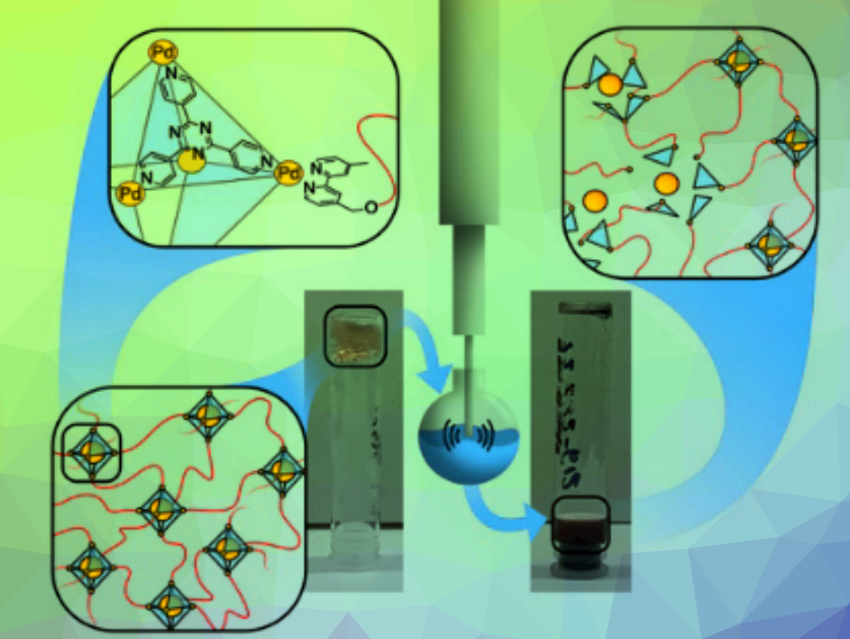A supramolecular hydrogel is a type of gel that forms through non-covalent interactions and is swollen by large amounts of water. Metal-organic cage-based gels are a specific type of supramolecular hydrogel formed through the self-assembly of metal-organic cages. These gels have a modular design and form a three-dimensional network with distinct pore sizes and shapes, allowing for a wide range of applications, including drug delivery, catalysis, and sensing, providing flexible platforms for the development of smart materials.
Bernd M. Schmidt, Heinrich-Heine-Universität Düsseldorf, Germany, and colleagues have prepared mechanoresponsive cage-crosslinked hydrogels for the first time. To crosslink the metal-organic cages, the team used homobifunctional poly(ethylene glycol) (PEG) chains terminally substituted with bipyridines as ligands for Pd6L4 cages. This subsequently leads to the formation of a network and to supramolecular polymer hydrogels. The hydrogels allow for non-covalent guest uptake and release using ultrasound from aqueous solution.

The team did guest-binding studies with ibuprofen, progesterone, and drospirenone, respectively, by adding an excess of the guest to the reaction mixture. Sonication experiments were performed with an immersion probe sonicator (20 kHz) in H2O, monitored by 1H NMR. The nanocavities within the cages were loaded with drug molecules that can be non-invasively released by ultrasound. The release of small molecules from their latent macromolecular carriers via polymer mechanochemistry typically requires the use of cargo molecules that are specifically functionalized, thus altering their properties. However, this system does not require specifically functionalized cargo molecules, making it a unique and promising technology.
According to the researchers, this combination of universal encapsulation and ultrasound as an external stimulus will contribute to the development of further supramolecular release systems and dynamic materials and to the development of new, responsive, and complex nanomaterials.
- Mechanoresponsive Metal‐Organic Cage‐Crosslinked Polymer Hydrogels,
Robin Küng, Anne Germann, Marcel Krüsmann, Louisa P. Niggemann, Jan Meisner, Matthias Karg, Robert Göstl, Bernd M. Schmidt,
Chemistry – A European Journal 2023.
https://doi.org/10.1002/chem.202300079


